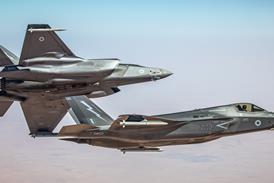Mark Pilling Collaboration on studies into future heavylift battlefield helicopter requirements will be one of the first beneficiaries of the newly launched US/UK Rotorcraft Working Group.
The Group was created at a signing on 26 July in the DERA chalet by Maj Gen JP Russell-Jones, capability manager (Manoeuvre) Ministry of Defence, and Brig Gen Joseph L Bergantz, programme executive officer Aviation of the Department of Defense.
It is intended to further enhance the already close co-operation on military rotorcraft technologies between the two countries.
The accord allows the US and UK to bring together their previously independent studies into heavylift helicopter needs.
In its Future Transport Rotorcraft study, the US is looking at what capabilities and performance the army will require, says David Weller, director Advanced Systems Directorate, US Army Aviation and Missile Command.
"We are starting with a clean sheet of paper," he says. Such an aircraft could lift up to 20 tonnes of cargo vertically, have a cargo compartment similar in size to a Lockheed C-130, and a range of 500km (270nm).The Future Transport Rotorcraft could replace Chinooks and Super Stallions, or operate in tandem with smaller helicopters.
The UK is conducting its own examination into large military helicopters, and will begin to co-operate in this area with the US. "The value here is we can start early on looking to see if we have a common set of requirements and whether we have a common solution," says Weller.
Develop
In terms of current projects, the working group will help develop closer relationships on aircraft each country has in common. At present this means the Chinook and Apache.
"The group will address current needs (for these helicopters) and upgrade opportunities, examining technologies coming through in a five,10,15 and 20-year timeframe," says Tim Moores, assistant director Rotorcraft and Simulation Systems at DERA.
The US Army Aviation and Missile Command and DERA have been working together on rotorcraft R&D since 1996.
Source: Flight Daily News























